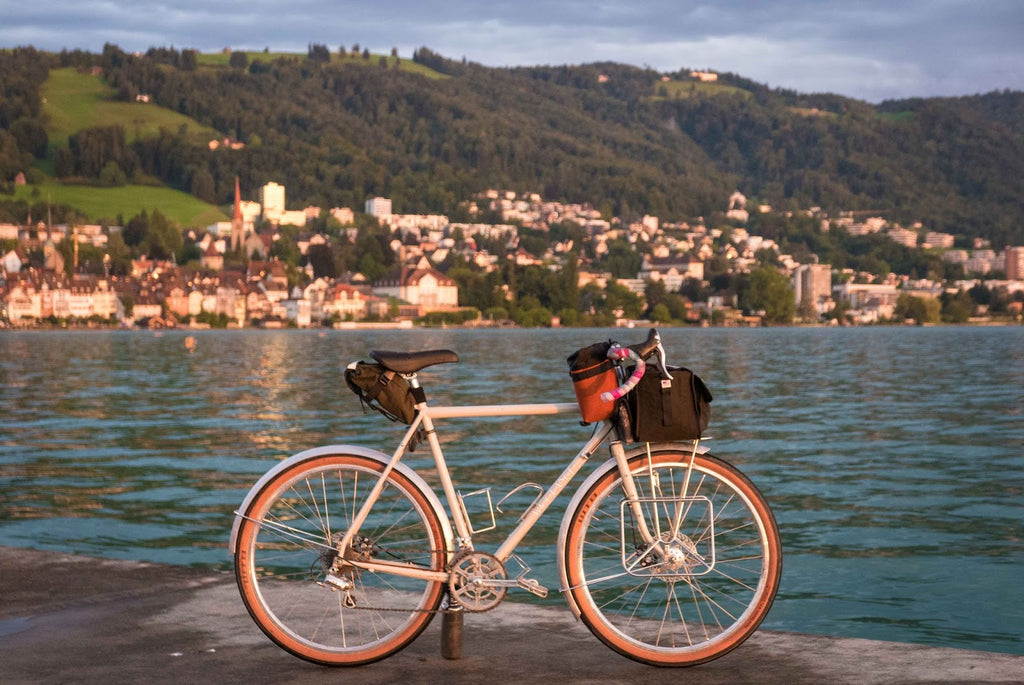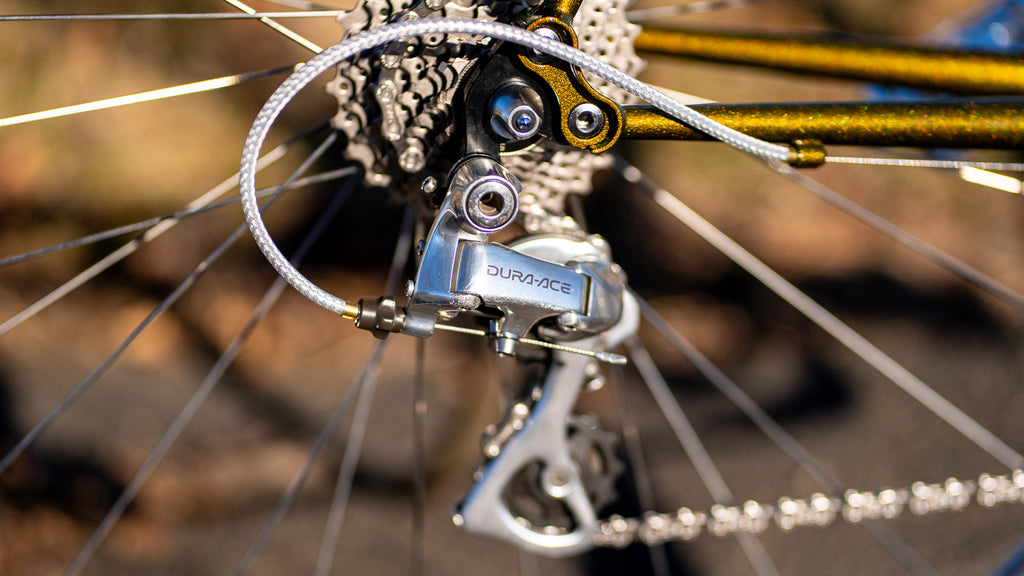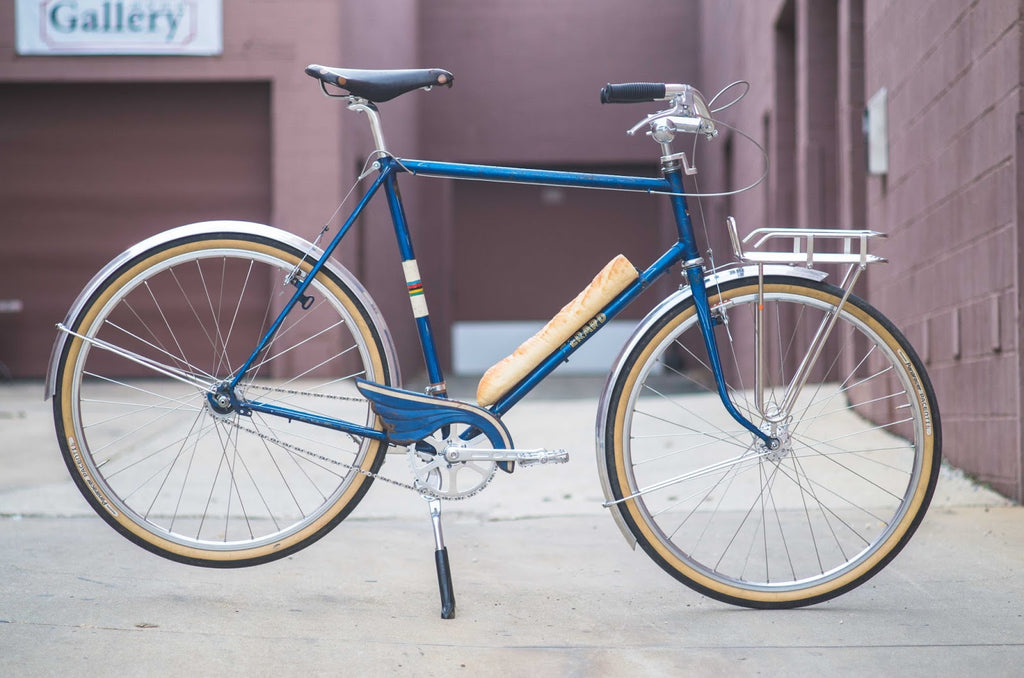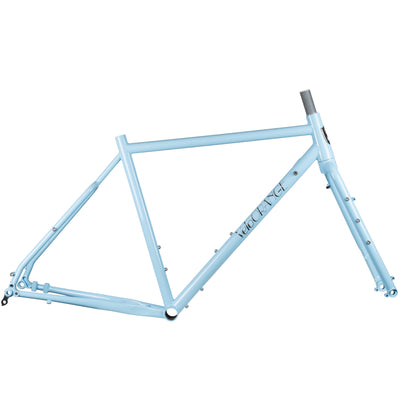Building the Ultimate Dependable Bicycle: A Guide to Reliability and Readiness
In the world of cycling, reliability and readiness are paramount. Whether you're commuting to work, embarking on a long-distance tour, or simply enjoying a leisurely ride around town, having a bicycle that you can depend on is essential. In this guide, we'll explore how to transform your bike into the epitome of reliability, ensuring it's always ready to go whenever you are.
Prioritize a Comfortable Position

A comfortable riding position is essential for long-term enjoyment and rideability. When you opt for a comfortable posture, you reduce strain on the back, neck, and shoulders ultimately leading to a bike you're more excited to ride. While you don't need to be bolt upright to be comfortable, you can also leave the flat back fit to the pro riders. There is an in between that allows comfort and efficiency. Spacers under your stem are fine to use if you have a steel steerer - so don't be afraid to stack 'em up! When setting up a bike for myself, I typically like to start with the saddle and handlebars even with each other.

Opt for Cable Brakes

While hydraulic brakes offer excellent stopping power, they can also be prone to issues such as fluid leaks and complex maintenance requirements that may not easily be done at home. Cable-actuated brakes, on the other hand, provide reliable performance with simpler maintenance procedures. With regular cable adjustments and replacements as needed, you can ensure consistent braking performance without the hassle of hydraulic systems. Speaking of cables....
Choose Cable-Actuated Shifting

While wireless shifting systems may offer convenience in terms of installation and aesthetics, they can also introduce potential reliability concerns, namely battery life issues and higher cost for repairs. Cable-actuated shifting systems provide dependable gear changes without the need for batteries or worrying about the NSA jamming your signals. Regular cable maintenance and adjustments will keep your shifting smooth, precise, and reliable.
Install Dynamo Lighting

I'll admit, I'm terrible with charging my bike's batteries. So on my main bike, a Polyvalent Low Kicker, I have a dynamo lighting system. Dynamo lighting offers a reliable and sustainable alternative to battery-powered lights. By harnessing the power of your front hub's movement, dynamo lights provide consistent illumination without the need for charging or battery replacements. While initially a more significant investment, dynamo lighting pays off in the long run by ensuring you're always visible and safe on the road. Here's a guide we did a while back where we installed front and rear dynamo routing on a Polyvalent.

Mount 'Yer Fenders

Fenders are a simple yet invaluable addition to any bicycle, especially for those who ride in varying weather conditions. By shielding you from splashes and debris kicked up by your wheels, fenders help keep you and your bike clean and dry, prolonging the lifespan of components and minimizing maintenance needs. Additionally, fenders contribute to a more comfortable riding experience by reducing water spray and mud splatter onto you.
Kickstands Rule

While often overlooked, a kickstand is a practical accessory that adds convenience to your cycling experience. Whether you're stopping for a quick break, running errands, or parking your bike for an extended period, a kickstand provides a stable and secure resting place for your bicycle.
Don't Go Maximal
When designing your dependable bicycle, resist the urge to go maximal with your choices. You probably don't need a giant cargo bike with oversized panniers. Opt for simplicity and functionality over excess. Avoid making the bike so big and significant that it becomes unpleasant to ride. Focus on the essentials that enhance reliability and readiness without sacrificing comfort or maneuverability.
But on the other hand, this freaking rules!

Transforming your bicycle into a dependable and always-ready ride involves thoughtful component selection and regular maintenance. By prioritizing reliability over cutting-edge technology, opting for cable-actuated brakes and shifting, ensuring a comfortable riding position, and equipping essential accessories such as dynamo lighting, fenders, and a kickstand, while also avoiding maximal design and component choices, you can create a bike that's ready to take on any journey with confidence and peace of mind.
What have you found that works for your own daily rider?



Just went through this. Given a choice, opt for an “old-fashioned” freewheel rear hub rather than a “freehub” rear hub. Compatibility “cassette”-to-cassette is not what it ought be. So that apparent convenience is lost. If or when the pawls fail, compatibility wheel-to-wheel is non existent. So you lose the whole wheel. If cup and cone, re-packing might mean hoping the grease keeps the balls in place while you lower the assembly onto the axle. The idea about having the drive-side bearings closer to the axle bolt over-corrects years of already reliable operation.
Having worked customer service for a large mail order bike retailer, I will be hard pressed to ever willingly run electronic shifting. The number of calls I’d get from customers experiencing issues and needing help with trouble shooting on equipment with very little use was not insignificant. All too often, having exhausted the trouble shooting manual, customers were stuck with expensive replacement parts bills. Not to mention the waste and environmental impact from what my experience has led me to believe is built in obsolescence. Subjectively, electronic shifting detracts for many the beauty and utility of the bicycle. Objectively, it strays us further and further from the roots of the sport as a one that was relatively attainable for the masses. The expense and expense of maintenance is nothing short of alienating to many looking to get into or remain in the sport with the powerful marketing and companies dictating the market in mind. I very much appreciate the article and Velo Orange’s ethos towards sustainable and practical equipment.
“Prioritize a Comfortable Position”
Yep! Prior to about the year 1987 there was a popular category of cycling known as touring which included riders who spent not just long days but long weeks, long months and a few who spent long years pedaling their bikes around the world, where a comfortable riding position was a top priority for them and right on the heels of that priority were the matters of dependability and reliability.
A study of that earlier touring bike era would be worthwhile and today most commuters would have similar priorities, but then some later framesets and components do offer considerable improvements, sometimes available to update considerably older frames, too.
Get a Velo Orange v.5 Polyvalent frameset while available, part old school, part new school.
Been touring since 1963. All your recommendations have been arrived at by vast experience. On my first new touring wheels since 1979, custom BinghamBuilt Ti, mostly geared with VO. Sweet. Wanna pic?
You ‘nailed it’.
Leave a comment